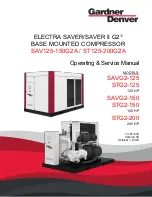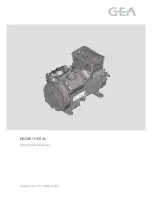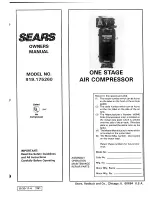
7
IMPORTANT:
Always refer to the accessory manufacturers recommendations for
optimum operating pressures for their equipment.
4.
With the operating pressure set, reopen the air outlet tap.
5.
The Pressure Switch, located within the plastic cover beneath the ON/OFF switch,
should not require adjustment. This is an automatic device and has been preset at
the factory to stop the motor when pressure in the receiver reaches its maximum,
and to start it again when the pressure in the receiver falls to the minimum preset
value. This operation is completely automatic and does not affect the spraying
process in any way. However, should problems develop with the cut-in, cut out
settings, please consult your Clarke dealer, or the Clarke Service Dept..
NOTE:
a
.
If the machine pumps continuously without cutting out then the compressor is too
small for the application/tool being used, and damage may result. Consult your
Clarke dealer.
b.
The motor is protected by a Thermal Overload so that if the motor overheats for any
reason - the thermal overload will trip, stopping the motor. Allow a period for the
motor to cool down before restarting (15 - 20 minutes).
c.
DO NOT exceed the Duty Cycle for the machine (see Specifications).
NOTE: For most spray work do not exceed 50 psi (unless following paint manufacturer’s
instructions).
For other airline equipment such as, tyre gauges, staple guns, paraffin guns etc., it may be
necessary to set the operating pressure at a higher (or lower) level.
Before connecting your airline to the compressor,
allow it to run for 10 - 15 seconds, with the air drain
Valve, (see, Fig. 1) completely open to permit a good
distribution of the lubricating oil.
2.
Close the outlet tap then connect one end of suitable
air hose to the outlet connector (see Fig. 1) , and the
other end to the equipment to be used.
3.
Set the outlet pressure by adjusting the Pressure
Regulator.
T
o do this, lift the Pressure Regulator Knob, and turn it
clockwise to increase pressure, anticlockwise to
decrease as noted on the Outlet Gauge.
To lock the Regulator Knob and hence the outlet
pressure, push the Regulator Knob down until it clicks
into place.
Fig.4





























